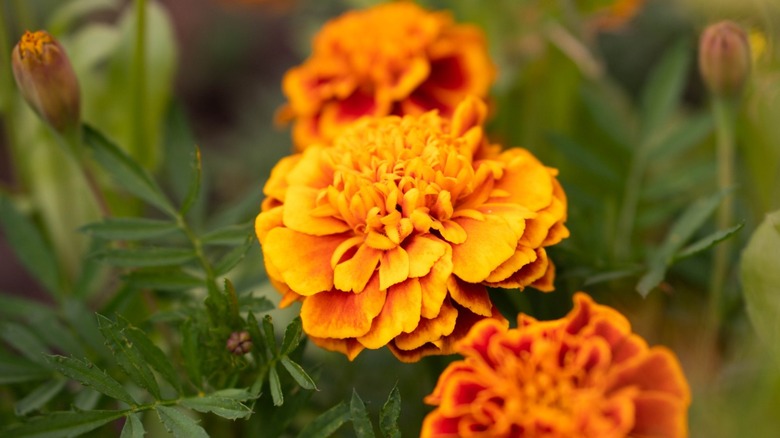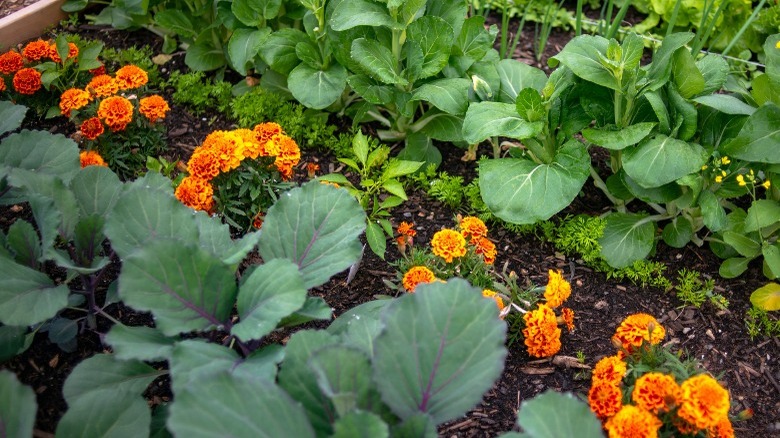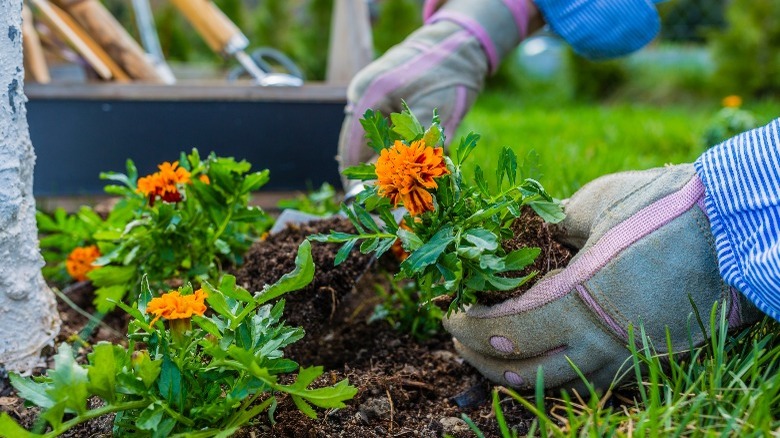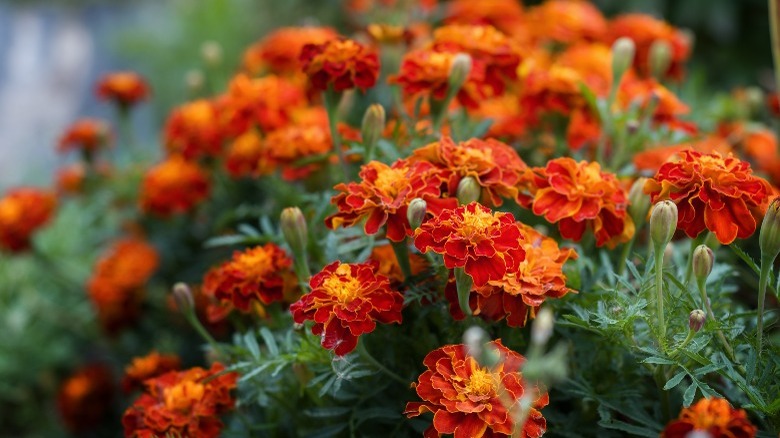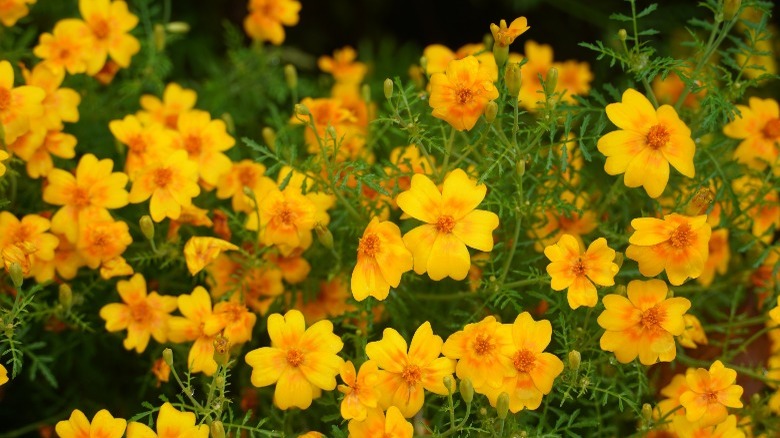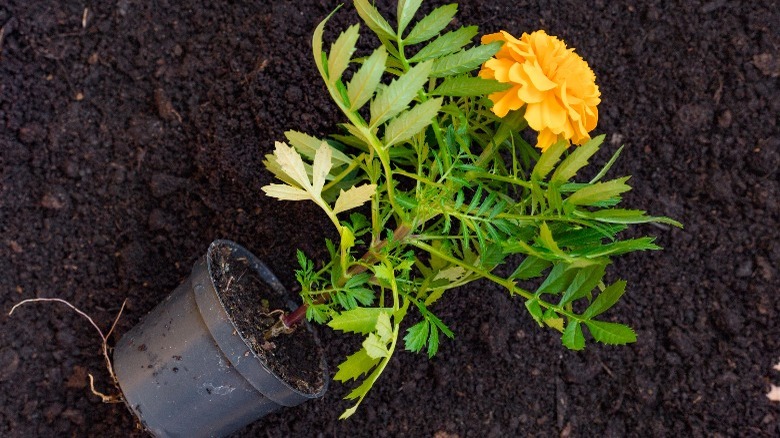Marigold: Everything You Need To Know Before Planting
Marigolds (Tagetes) are a beloved flowering plant, immediately recognizable to both avid gardeners and non-gardeners alike. Their name also functions as a descriptor, as the most well-known varieties come in shades of bright yellow and vivid orange. Other varieties, however, have flowers that range from creamy white to fiery red to rich burgundy. Marigolds are annuals, lasting only a single season, but they have quite an impact during their short life cycle.
The plant is native to Mexico, and was considered sacred by the native Aztec people who used it for its believed medicinal, culinary, and even magical properties. The cultural significance is continued today, as marigolds remain an integral part of Dia de los Muertos (Day of the Dead) celebrations throughout Mexico. According to a tradition originating from the Aztecs, the strong fragrance of the marigolds helps guide spirits back to earth to commune with the living during the two-day holiday, per NPR. The marigolds are placed on elaborate altars, called ofrendas, which commemorate deceased loved ones. They add beauty and a sense of joy to the celebrations, which are intended to be festive rather than somber. You can use marigolds to add beauty to your own garden from early spring until late fall when they succumb to the cold winter weather. Easy to grow and available in a wide range of colors and sizes, there's no shortage of varieties to choose from. Read on to find out how to grow and care for beautiful marigolds!
How to use marigolds in your garden
Marigolds are versatile plants and can be used in your garden in several ways. As long-blooming annuals, they can be reliably counted on to produce flowers all season long. In a mixed bed, they can fill in sparse areas and provide color while the shorter-blooming perennials are not yet or past flowering. They can also help to protect other plants they surround. Marigolds give off a strong scent that, though not unpleasant, is not particularly floral. It is enough, however, to repel common pests such as nematodes, whiteflies, and even deer, according to HGTV. Oddly enough, marigolds also have the opposite effect on other bugs, and can attract helpful fauna such as pollinating honeybees and ladybugs that assist by eating aphids.
Certain Mexican marigolds can grow as tall as 4 feet high and produce 5 inch wide flowers! You place them along fences or behind shorter plants, as they are tall enough to be seen and enjoyed even from afar. Dwarf varieties of the shorter French marigolds can fill in as temporary ground cover, or be used to border garden beds and paths. Smaller types make excellent container plants as well, filling window boxes and entryway pots with gorgeous bursts of color you'll be able to enjoy all season long.
How to grow marigolds
Marigold seeds germinate easily and can be directly sown outdoors after the last frost date. When sowing outside, plant seeds in threes, 1/2 inch deep and 8 to 10 inches apart. Water them daily to keep the soil moist until seedlings emerge, about a week after planting. This method is appropriate for the quick-growing Signet and French marigolds, which can be planted as late as midsummer, according to Farmer's Almanac.
Marigold seedlings started indoors or purchased from a nursery can be transplanted easily as well. This method is better for Mexican marigolds that are slower-growing, and should be planted as soon as possible after the last frost has melted. Marigolds can also be propagated from cuttings of a healthy plant. Hunker instructs readers to examine the plant for a fresh, green stem, at least 4 inches long. Use a sharp knife or scissors to make a clean cut. Remove all leaves from the bottom 2 inches of the stem, and bury this section in seed starter mix to encourage growth. Keep the cutting moist and warm until 1-inch roots have formed. Once they do, transfer the plant to well-draining soil.
How to care for marigolds
When planted in full sun, marigolds will thrive with little care and reliably produce colorful flowers. They are drought tolerant and may only need to be watered once a week or so, though French marigolds prefer wetter conditions and may need to be watered more frequently. Be careful to water the soil, rather than the plant, to avoid the emergence of gray mold or powdery mildew that will harm the plant, advises Gardener's Path. Fertilize normally after planting in the spring, but scale back when they begin flowering. Marigolds do not require rich soil, and excessive nutrients can overwhelm the plant. Too much nitrogen in the fertilizer will encourage foliage growth rather than flowering, so use sparingly.
Once marigolds begin flowering, you should deadhead, or remove the spent blossoms. This will help encourage new blooms and avoid decay that can make the plants more susceptible to disease. You can even save the seeds from the spent blooms for planting the following year. The Spruce explains that seeds are ready for harvest once the pod is brown and the petals have dried out. Remove the petals from the seed pod, and open it up. Remove the black and white seeds, and spread them on a paper towel to dry out for about a week. Store them in a sealed paper envelope and keep them in a cool, dry place until the spring. After the last frost date, you can sow them directly in the ground.
Marigold varieties
Marigolds are primarily native to Mexico as well as areas of Central and South America. Garden Design explains that there are three primary species of marigolds: Mexican marigold (Tagetes erecta), French marigold (Tagetes patula), and Signet marigold (Tagetes tenuifolia). Mexican marigold is the tallest species, reaching up to 4 feet in height. The petite French marigold grows to only 6 to 12 inches tall, spreading out along the ground and preferring a rainier environment. Signet marigolds grow up to 1 foot tall and thrive in hot weather. Here are some beautiful varieties of all three:
- Fireball Marigold (T. patula) is a French marigold named for its bright red flowers that shift to orange as they mature. Its vivid color creates a stunning impression, despite remaining under 1 foot tall.
- Moonstruck Yellow Marigold (T. erecta) is a Mexican marigold. It grows thick, compact stems, strong enough to support the impressive yellow double blooms that can grow as large as 4 inches across!
- Vanilla Marigold (T. erecta) is a Mexican marigold with a subtler aesthetic. Its ruffled, cream-colored double flowers add elegance anywhere this variety is planted.
- Lemon Gem Marigold (T. tenuifolia) is a type of Signet marigold, identifiable by its yellow, five-petaled single flower heads and its citrusy fragrance. Take care with this species, as it tends to spread rather aggressively.
- Super Hero Spry Marigold (T. patula) is a French marigold with unique two-toned blooms. Flatter, deep burgundy petals surround the golden-yellow center of the flower.
Are marigolds toxic?
Two of the most common marigold species, Mexican marigold (Tagetes erecta) and French marigold (Tagetes patula), are mildly toxic. In humans, contact with the sap can irritate the skin, eyes, and nose, explains Hunker. These symptoms are not severe and can easily be avoided by wearing gardening gloves whenever working with marigolds. Still, vulnerable individuals such as children should be aware and instructed to take care. In animals, ingestion of the plant can cause gastrointestinal issues, and the sap can cause skin irritation, according to the Pet Poison Helpline. They can also cause more concerning symptoms such as vomiting and swelling in extreme cases. If your dog or cat appears to be having symptoms you suspect result from marigold ingestion or exposure, it is a good idea to call your vet or a pet poison control hotline. Though most cases are mild and not life-threatening, it is always better to be safe rather than sorry.
By contrast, Signet marigolds (Tagetes tenuifolia) are non-toxic to both humans and animals, and can be used in various culinary and medicinal applications (via Gardening Know How). Their feathery leaves have a lemony fragrance, and they are said to have a citrusy or spicy taste that can enhance a festive salad, baked treats, or even a daring cocktail recipe! Make sure, however, that you are correctly identifying the species of marigold as non-toxic before incorporating them into food and drink. Otherwise, enjoy!
How to repot marigolds
Because marigolds are annuals, it's unlikely they will need repotting during their single-season life-cycle. Knowing how to pot marigolds is important nonetheless. You may need to transplant seedlings to a window box, or transfer a marigold cutting to a pot once it has formed roots and outgrown its initial seed starter formula. To repot a marigold plant, you'll need well-draining container soil, a garden spade, and a pot. It's also a good idea to wear gloves since marigolds have slight toxicity and can cause skin irritation.
It may be tempting to use leftover garden soil, but these mixtures will retain too much moisture and drown your plant. When selecting a pot, make sure it is large enough to fit the root ball, with a couple of inches of space, according to SF Gate. Terracotta or clay pots will best allow the soil to dry out between waterings, but you can add a layer of pebbles to the bottom of a plastic container for additional drainage. Once you've selected your container, cover the bottom and sides with a few inches of soil and gently place the plant in the pot. Fill in any gaps with soil so the root ball is completely covered, and the plant can hold itself upright in the pot. Marigolds transplant well and should grow roots quickly. As a final step, water the plant thoroughly to help it adjust to its new container, and enjoy the bright flowers!
